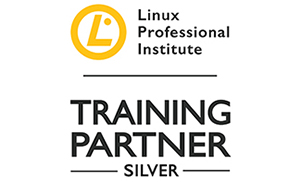301A: BIG-IP LTM Specialist: Architect, Setup, and Deploy Course
301A: BIG-IP LTM Specialist: Architect, Setup, and Deploy Training
The 301A BIG-IP LTM Specialist is the first exam of two exams to get F5 Big-IP LTM Certified Technical Specialist.
During the 301A BIG-IP, LTM Specialist certification training course participants will learn SNAT configuration, steps necessary to configure AVR, SSL requirements, and virtual server configuration settings. By attending this course, candidates will gain knowledge on how to configure remote authentication and multiple administration roles on the LTM device, deploy or upgrade vCMP guests, and LTM device performance and more.
Achieving the F5-CTS, BIG-IP LTM certification is a prerequisite for both the Cloud and Security Solutions Expert certification tracks.
Valid F5-CA, BIG-IP Certification
Candidates can achieve this certification by passing the following exam.
- 301A–BIG-IP LTM Specialist: Architect, Setup, and Deploy
Logitrain F5 301A–BIG-IP LTM Specialist: Architect, Setup, and Deploy course material
- Given an expected traffic volume, determine the appropriate SNAT configuration
- Given a scenario, determine the minimum profiles for an application
- Given an application configuration, determine which functions can be
- offloaded to the LTM device
- Given an iRule functionality, determine the profiles and configuration options
- necessary to implement the iRule
- Given application requirements, determine the appropriate profile and persistence settings
- Explain the steps necessary to configure AVR
- Given a set of reporting requirements, determine the AVR metrics and entities to collect
- Given a scenario, determine the appropriate monitor type and parameters to use
- Given a set of parameters, predict an outcome of a monitor status on other LTM device objects
- Given a health monitor configuration and pool member response predict the resulting status of the pool member
- Given a set of application SSL requirements, determine the appropriate profiles and profile options
- Given a scenario determine the steps required to maintain SSL certificates
- Given a set of application requirements, determine the appropriate virtual server type to use
- Given a set of application requirements, determine the appropriate virtual server configuration settings
- Explain the matching order of multiple virtual servers
- Given a scenario, determine the appropriate load balancing method(s)
- Given a scenario, describe how to configure or modify pool settings
- Explain the effect of configuration options and resource health on load balancing decisions
- Describe how to deploy and modify applications using existing and/or updated iApp application templates
- Distinguish between the management interface configuration and application traffic interface configuration
- Given a network diagram, determine the appropriate network and system settings (i.e., VLANs, self-IPs, trunks, routes, NTP servers, DNS servers, SNMP receivers and syslog servers)
- Explain how to configure remote authentication and multiple administration roles on the LTM device
- Explain the uses of administrative partitions
- Given a scenario, determine an appropriate high availability configuration (i.e., failsafe, failover and timers)
- Given a scenario, describe the steps necessary to set up a device group, traffic group and HA group
- Predict the behavior of an LTM device group or traffic groups in each failure scenario
- Determine the effect of LTM features and/or modules on LTM device performance and/or memory
- Determine the effect of traffic levels on LTM device performance
- Determine the effect of virtual server settings on LTM device performance
- Describe how to deploy or upgrade vCMP guests and how the resources are distributed
- Determine the appropriate LTM device security configuration to protect against a security threat
This course is likely to add to the employment-related skills of the participants. The skills developed are likely to be used in the course of being an employee or working in a business.
- Network Engineers
- Cybersecurity Engineers
- Sales Engineers
- Network Administrators
- IT professionals interested in F5 certifications
- Explain when SNAT is required
- Benefit of using SNAT pools
- Difference of SNAT object types
- Explain security options available for the application
- Explain how to use LTM as a service proxy
- Describe how a given service is deployed on an LTM
- Explain how to offload HTTP servers for SSL compression and caching
- Explain how to configure LTM to handle SSL offload
- Explain how to create an HTTP configuration to handle an HTTP server error
- Explain how to create an HTTP configuration for mobile clients
- Explain how to create an HTTP configuration to optimize WAN connectivity
- Determine when connection mirroring is required
- Steps necessary to configure the AVR
- Explain how to create an AVR profile and options
- Sizing implications of AVR on the LTM device
- Logging and notifications options of AVR
- Uses of the collected metrics and entities
- Explain how to create an application specific monitor
- Given a desired outcome, determine where to apply health monitors
- Determine under which circumstances an external monitor is required
- Determine the effect of a monitor on the virtual server status
- Determine the effect of active versus inline monitors on the application status or on the LTM device
- Given a set of parameters, predict an outcome of a monitor status on other LTM objects
- Determine the effect of a monitor on the status of a node, pool member, pool and/or virtual server
- Describe the difference between client and server SSL profiles and functionality
- Explain how to configure the different SSL profile settings
- Describe the process to update expired SSL certificates
- Describe the process to update expired SSL certificates
- Explain how to implement SSL chain certificate
- Describe the relationship between profiles and virtual servers
- Describe which steps are necessary to complete prior to creating the virtual server
- Describe the security features when creating a virtual server
- Explain the effect of changing different virtual server types
- Explain the effect of changing different virtual server options: types, configuration settings, and/or resource
- settings
- Differentiate between client side and server- side settings
- Explain how to configure source addresses from which virtual servers can accept traffic
- Differentiate different load balancing methods
- Explain how to perform outbound load balancing
- Explain how persistence and pool member status effects load balancing decisions
- Describe priority group activation within a pool
- Describe the effects of Slow Ramp Time
- Describe how an iRule can effect the persistence behavior
- Explain how load balancing decisions are impacted by the statistics of nodes or pool members
- Explain the effects of action on service-now
- Determine the effect that virtual server traffic and/or resource status will have on load balancing decisions
- Given a scenario, determine the appropriate load balancing methods
- Identify use cases for deploying application templates
- Describe how to locate, retrieve, and import new updated application templates
- Describe how to update an existing application that was created from an iApp
- Explain the requirements for management of the LTM devices
- Explain the differences between the flow of management and application traffic
- Explain how to configure management connectivity options: AOM, serial console, USB & Management
- Ethernet Port
- Explain the requirements for self-IPs (including port lockdown)
- Explain routing requirements for management and application traffic (including route domains and IPv6)
- Explain the effect of system time on LTM devices
- Explain the mapping between remote users and remote role groups
- Explain the options for partition access and terminal access
- Explain the relationship between route domains, user roles and administrative partitions
- Explain the options for partition access and terminal access
- Explain how the score is calculated for HA groups
- Explain the required objects on an HA pair
- Configure device trust
- Set up sync-only and sync-failover device service cluster
- How to configure HA groups
- Assign virtual servers to traffic groups
- Compare and contrast network and serial failovers
- Compare and contrast failover unicast and multicast
- Determine the effect of iRules on performance
- Determine the effect of RAM cache on performance and memory
- Determine the effect of compression on performance
- Determine the effect of modules on performance and memory
- How to use traffic groups to maximize capacity
- Effect of connection mirroring on performance
- Performance impact of vCMP guests on other guests
- Understand that the vCMP guest license is inherited from the host
- Deploy and/or upgrade vCMP guests and related dependency on host version
- Implications of SNAT versus NAT on unintended access
- Implications of forwarding virtual servers on the environment security
- Set up and enable SNMP device traps on the LTM device
- Implications of port lockdown settings

Get a Certificate of Attendance to prove your commitment to learning

We provide personalised learning experience for every student

Course material in digital format is included for flexibility and ease of use

Mock test is included in the full-time courses to assist with your preparation

Our trainers are highly skilled with expertise and extensive hands-on experience

Relax, we will beat competitor’s advertised price in Australia. Our course has no extra costs
| Location | Type | Duration | Price | Dates | |
|---|---|---|---|---|---|
| Location | Type | Duration | Price | Dates |
The supply of this course/package/program is governed by our terms and conditions. Please read them carefully before enrolling, as enrolment is conditional on acceptance of these terms and conditions. Proposed dates are given, courses run subject to availability and minimum registrations.
Find out why we are the leading choice to help boost your career in Australia
| Approachable and knowledgeable; comfortable surroundings. Logitrain does make IT training easier |
I recently followed the ITIL Foundation course at Logitrain. The training, materials and facilities were excellent and I would not hesitate to train with Logitrain again.
Thanks for a great week! Really enjoyed and feel I picked up a lot. Great Trainer! Will definitely look at further studies here.
Well-presented and able to convey immense knowledge to class. All queries were responded to promptly.
Excellent teaching method, easy to understand.
Logitrain provided a valuable insight into ITIL and enabled me to excel and advance my knowledge through a simple and well organised series of sessions.
Great place to study for certification, knowledgeable persons, excellent customer service. Ready to answer queries on the spot, very helpful.
The trainer was very patient and gave everybody the opportunity to participate.
The trainer explained everything very well. Logitrain was very helpful for me in getting a better overall understanding of CCNA. I previously had studied it 2 years earlier but required revision
Over 1000 organisations have relied on Logitrain to be their trusted training partner.

Don’t Wait. Please fill the form now.




































































